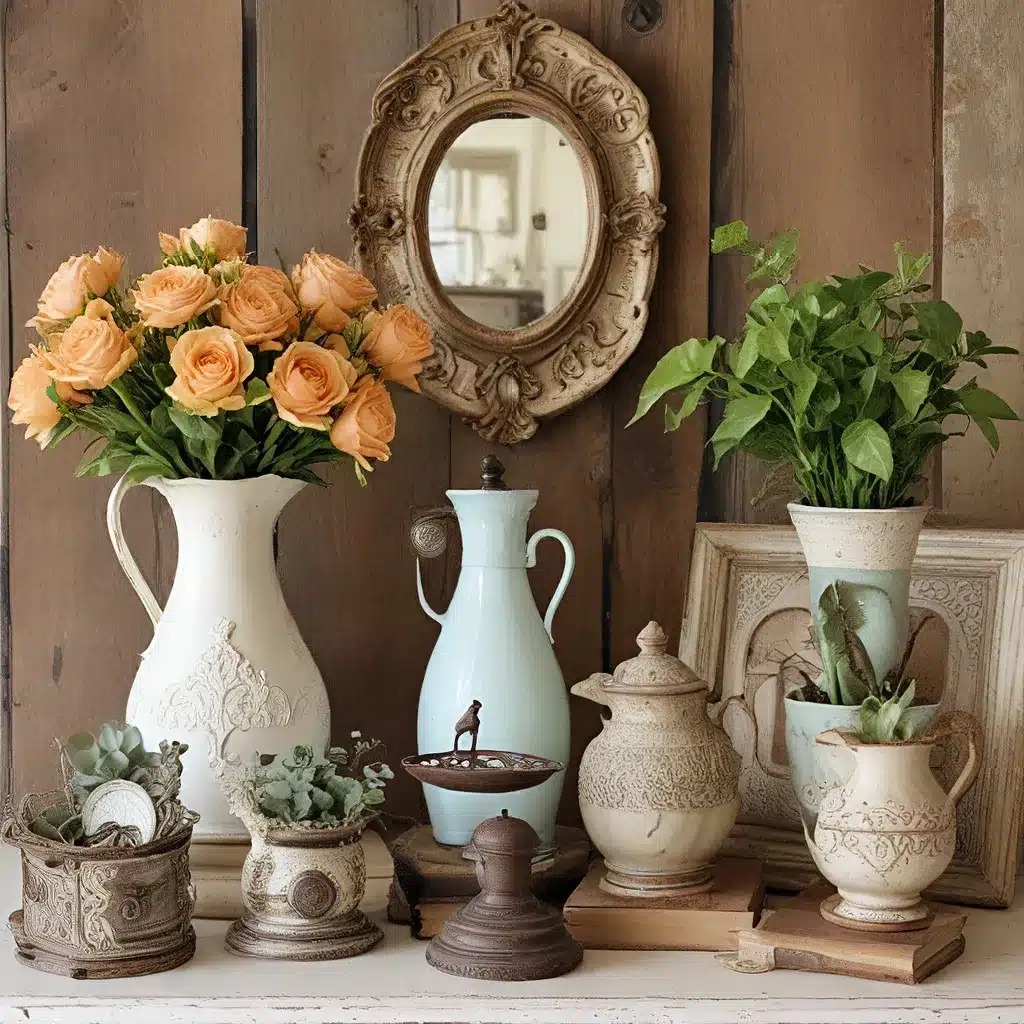
In the ever-evolving world of interior design, sustainability and personalization have become the hallmarks of truly remarkable spaces. As homeowners and design enthusiasts seek to infuse their homes with character and charm, the art of upcycling vintage finds has emerged as a captivating trend. In this article, we’ll explore the boundless possibilities of repurposing ordinary objects into extraordinary décor, creating a one-of-a-kind living environment that reflects your unique style.
Embracing the Beauty of the Secondhand
The allure of thrifted and vintage treasures lies not only in their timeless appeal but also in the stories they hold. Each piece, whether a weathered piece of furniture or a forgotten trinket, carries with it a rich history, waiting to be uncovered and given new life. By incorporating these pre-loved items into your home, you can weave a tapestry of memories and experiences that breathe life into your space.
Urban Grace Interiors, a renowned design firm, has long championed the art of upcycling, encouraging their clients to embrace the beauty of the secondhand. “There’s something truly special about taking an ordinary object and transforming it into something extraordinary,” explains the firm’s lead designer, Sarah Ramberg. “It’s not just about creating a beautiful space; it’s about crafting a home that reflects your unique personality and experiences.”
Repurposing with a Purpose
When it comes to upcycling, the possibilities are endless. From transforming an old wooden crate into a chic side table to breathing new life into a tarnished chandelier, the key is to approach each project with a creative mindset and a willingness to experiment.
One of the most popular upcycling techniques is the repurposing of vintage furniture. Whether it’s a weathered dresser, a sturdy armchair, or a charming side table, these pieces can be refinished, reupholstered, or even reconfigured to suit your modern design aesthetic. “The beauty of vintage furniture lies in its exceptional craftsmanship and the character it brings to a space,” says Ramberg. “By giving these pieces a new lease on life, you’re not only saving them from the landfill, but you’re also creating a truly unique and personalized interior.”
Transforming Unexpected Objects
But the art of upcycling doesn’t stop at furniture. Everyday objects can be transformed into stunning décor items, adding unexpected touches of whimsy and character to your home. Think of repurposing vintage suitcases as side tables, turning old doorknobs into decorative hooks, or even creating a one-of-a-kind light fixture from a cluster of mismatched wine bottles.
“The beauty of upcycling is that it allows you to think outside the box,” explains Ramberg. “By looking at everyday items through a fresh lens, you can uncover hidden potential and create something truly remarkable.”
Sustainable and Stylish
Beyond the aesthetic appeal of upcycled décor, there’s also a strong sustainability component to this trend. By repurposing existing objects, you’re not only reducing waste but also contributing to a more conscious and eco-friendly approach to interior design.
“Sustainability is at the forefront of many homeowners’ minds these days,” says Ramberg. “By incorporating upcycled and vintage pieces into your home, you’re not only creating a unique and personalized space, but you’re also making a positive impact on the environment.”
Curating Your Upcycled Oasis
When it comes to curating an upcycled interior, the key is to strike a balance between vintage charm and modern elegance. Start by identifying the design style that resonates with you, whether it’s rustic farmhouse, industrial chic, or mid-century modern. This will help guide your selection of upcycled pieces and ensure they seamlessly integrate into your overall aesthetic.
“It’s all about finding the right balance,” explains Ramberg. “You want your upcycled pieces to feel like they belong in the space, not like they’re just random additions. By carefully considering how they’ll complement your existing décor, you can create a cohesive and visually stunning interior.”
Designing with Intention
One of the hallmarks of a truly exceptional upcycled interior is the intentionality behind each design decision. From the placement of a repurposed light fixture to the layering of vintage textiles, every element should work together to create a harmonious and visually compelling space.
“When working with upcycled pieces, it’s important to approach the design process with the same rigor and attention to detail as you would with any other interior project,” says Ramberg. “Think about the flow of the space, the balance of colors and textures, and how the upcycled items can enhance the overall functionality of the room.”
Elevating the Everyday
Perhaps one of the most rewarding aspects of upcycling is the ability to transform the ordinary into the extraordinary. By repurposing mundane objects into stunning décor pieces, you’re not only creating a unique and personalized space, but you’re also elevating the everyday experiences of your home.
“Upcycling is about more than just decorating; it’s about infusing your living environment with a sense of joy and wonder,” says Ramberg. “When you walk into a room filled with repurposed treasures, it’s like stepping into a world of your own creation – a space that truly reflects your personality and celebrates the beauty of the secondhand.”
Embracing the Upcycled Lifestyle
As the demand for sustainable and personalized interiors continues to grow, the art of upcycling is poised to become an increasingly integral part of the design landscape. By embracing the beauty of the secondhand and the endless possibilities of repurposing, homeowners and design enthusiasts alike can create living spaces that are not only visually stunning but also deeply meaningful.
“Upcycling isn’t just a trend; it’s a lifestyle,” says Ramberg. “It’s about finding joy in the unexpected, celebrating the imperfections, and crafting a home that is truly one-of-a-kind. So why not start your own upcycling journey and transform your living space into a unique and sustainable oasis?”

